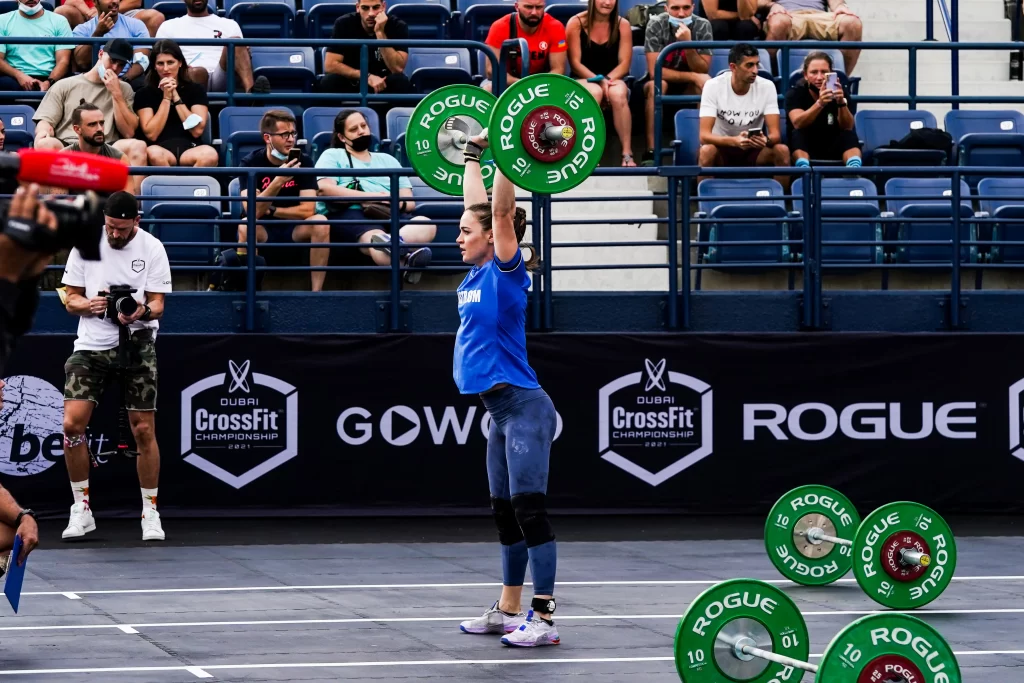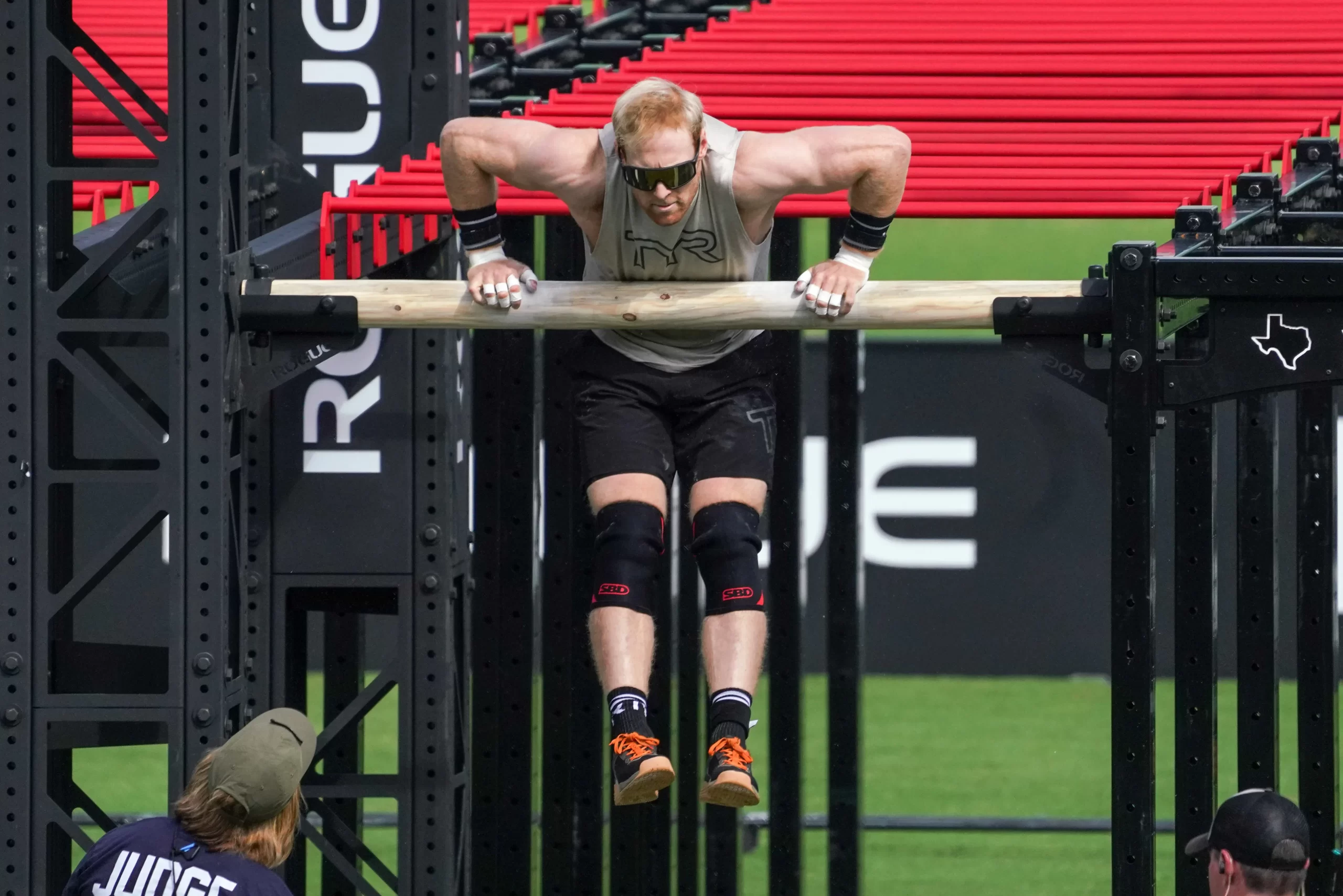Image Credit: Athlete’s Eye Photography
In a somewhat unique move, Dubai Fitness Championship announced a movement change to an event which they had already released. In the original announcement on October 31 of Event 3 the weightlifting movement of a ten round, MWG, workout was 15 wall balls. In their updated announcement on November 28 the 15 wall balls every round have been replaced with 10 thrusters.
Generally speaking, a thruster and a wall ball are the same movement patterns: start with an object on the ground, pick it up, pass through a squat and finish with a press overhead. However, in terms of competition over the history of this sport there is a pretty uniform perception that wall balls are better for tall athletes and thrusters are better for short athletes. So, today we set out to see whether or not that’s the case as it pertains to the athletes competing in Dubai this year.
How Are We Doing This?
Using the B.Friendly Stats database which has been built over the last several years by Barclay Dale, we can pull all relevant performances for the athletes in the field that include thrusters, and also that include wall balls. There is a certain crudeness to that because of course they can each be tested in a variety of different time domains, volume, weight, reps, and with many other movements or combinations of movements which could impact any one of those workouts more than the wall ball or thruster. But, over the course of time, patterns generally emerge, and that’s what we’re looking for.
Who Is in the Men’s Field?
Of the athletes slated to compete in Dubai we will first break them down by height. Per the records we have available, of the 29 men we believe to be competing there,
- 4 of them are 5’8” or shorter
- 12 of them are with 5’9”, 5’10” or 5’11”
- and 13 of them are 6’0” or taller
so it’s a generally tall field.
In total there are 12 athletes who score better on workouts with wall balls than thrusters, and 11 athletes who historically perform better on workouts with thrusters than wall balls (and five athletes for whom we don’t have enough relevant data).
Of the 12 who perform better on wall balls:
- 5 of them would be classified as “average height” amongst the field
- 6 would be classified as “tall” (6 feet or taller)
- and only Chandler Smith who is listed at 5’8” but seems like he could be an inch or two taller than that is categorized as “short” per our records.
Of the 11 athletes who are better at thrusters:
- 2 of them are “short” athletes
- 5 of them are “average height”
- and 4 of them are “tall”.
The conclusion for the men is that there is a trend in this field towards taller athletes doing better more often on wall balls than thrusters, which supports the expected outcome.
Who Is in the Women’s Field?
Doing the exact same thing on the women’s side with the 28 athletes we believe are competing there we have:
- 8 athletes who are 5’3” or shorter
- 14 athletes who are either 5’4”, 5’5”, or 5’6”
- And 6 athletes who are 5’7” or taller
In total only seven of these women score better on wall balls than thruster, with an interesting breakdown:
- 3 of those athletes are considered “short”
- 3 would be considered average height
- And 2 would be considered tall
There are 16 women who have historically performed better with thrusters than wall balls:
- 5 of those women are classified as “short”
- 8 of them are classified as “average height”
- And 3 of them are classified as “tall”
Overall, more women of the “short” and “average” stature do better with thrusters than wall balls, so even though there’s a relatively even split amongst where the taller women excel between the two movements, the field is generally average height or shorter (as opposed to the men’s field which is generally tall), and therefore this change will still likely skew the results towards the “not tall” athletes.
Who Are the Biggest Winners and Losers With This Change?
*the format for reading this is:
- Athlete % success rate on wall balls / % success rate on thrusters
- *success rate means a top 10 finish against the field
“Winners”:
- Giorgos Karavis 46% / 73%
- Reggie Fasa 0% / 43%
- Uldis Upenieks 33% / 60%
- Dana Paran, Elisa Fuliano, Lauren Fisher 0% / 33%
- Claudia Gluck 0% / 29%
- Devyn Kim 0% / 20%
“Losers”:
- Roman Khrennikov 87% / 50%
- David Shorunke 57% / 20%
- Elliot Simmonds 57% / 22%
- Camilla Salomonsson Hellman 33% / 0%
- Mia Hesketh 17% / 0%
- Seher Kaya 14% / 0%
Athletes Who Transcend the Change

There are a few athletes who show little to no change in performance between these two movements:
- Ricky Garad 50% / 40%
- Lazar Dukic 64% / 57%
- Moritz Fiebig 25% / 30%
- Luke Dukic 40% / 31%
- Andrea Solberg 33% / 29%
- Emma Tall 44% / 44%
- Alexia Williams 17% / 17%
- Jacqueline Dahlstrom 43% / 54%
- Karin Frey 33% / 36%
- Manon Angonese 30% / 36%
- Shelby Neal 38% / 46%
Conclusion
Our understanding per a conversation on Friendly Conversations this week is that this change could have been brought about due to an inability to get the desired equipment. Regardless, it creates a fun study and an interesting talking point. Cleary there are some athletes who excel at one of these movements compared to the other despite the general similarity in movement pattern. On the other hand, looking at the names in the final category, 10 of those 11 athletes have Games experience, and many of them would be considered top 10 threats, podium picks, and even potential winners of this competition. So, if you want to be great in this sport, wall balls and thrusters are both movements you could strive to have relatively similar success rates with.




What do you think?
Show comments / Leave a comment